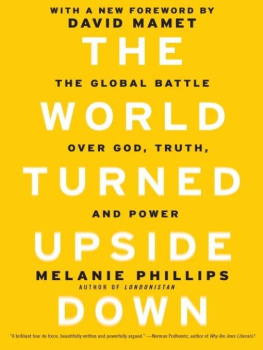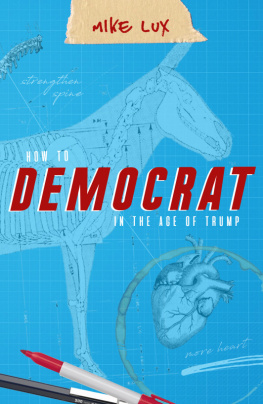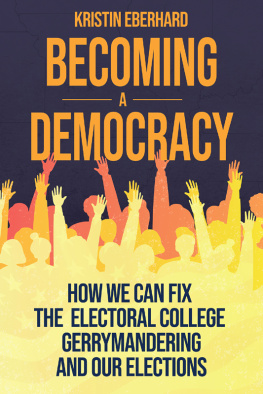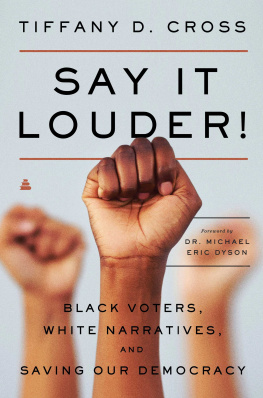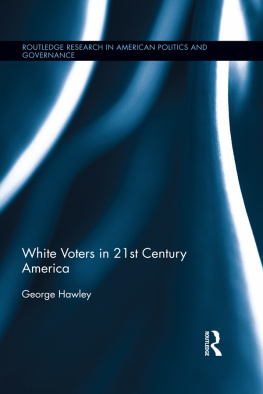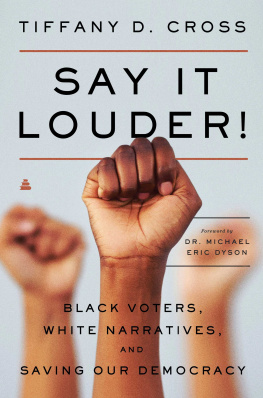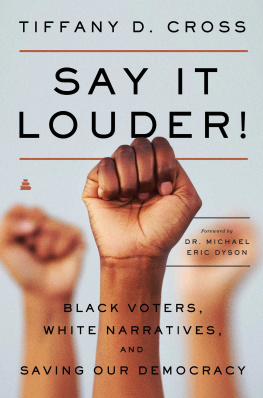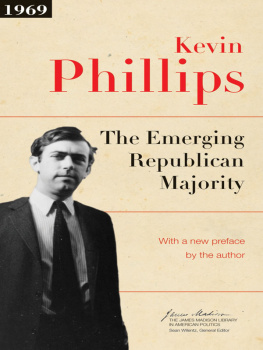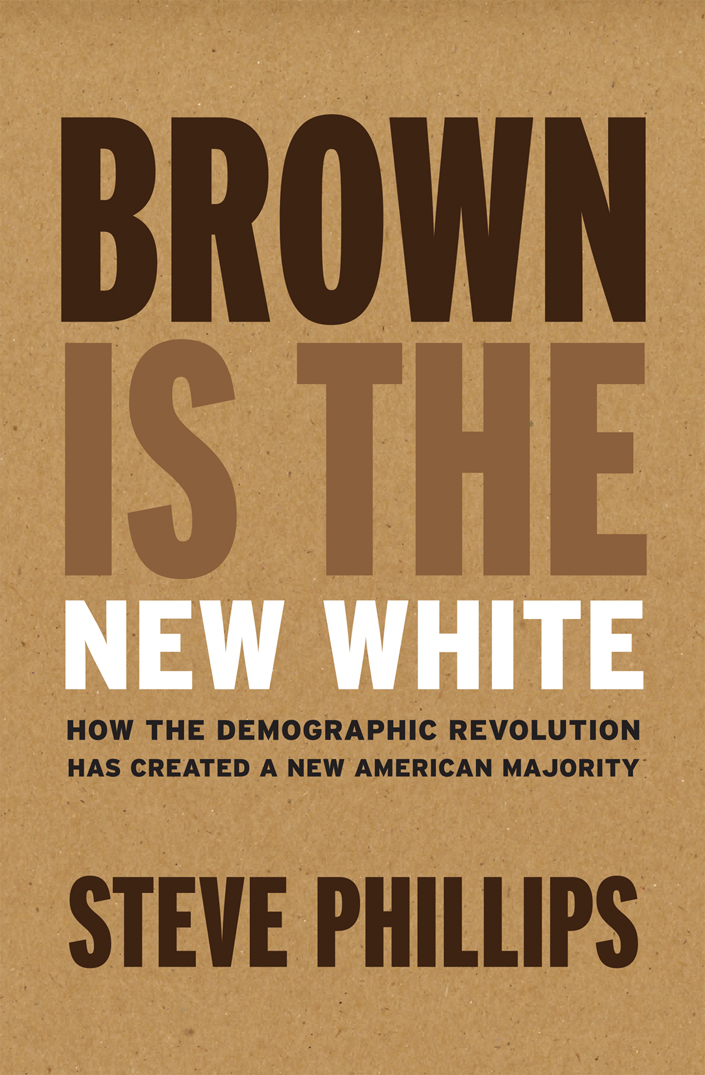

2016 by Steve Phillips
All rights reserved.
No part of this book may be reproduced, in any form, without written permission from the publisher.
Requests for permission to reproduce selections from this book should be mailed to: Permissions Department, The New Press, 120 Wall Street, 31st floor, New York, NY 10005.
Published in the United States by The New Press, New York, 2015
Distributed by Perseus Distribution
ISBN 978-1-62097-116-1 (e-book)
CIP data available.
The New Press publishes books that promote and enrich public discussion and understanding of the issues vital to our democracy and to a more equitable world. These books are made possible by the enthusiasm of our readers; the support of a committed group of donors, large and small; the collaboration of our many partners in the independent media and the not-for-profit sector; booksellers, who often hand-sell New Press books; librarians; and above all by our authors.
www.thenewpress.com
Book design and composition by dix!
This book was set in Scala
Printed in the United States of America
10 9 8 7 6 5 4 3 2 1
To my mother and father, who fought the fights that opened the doors that gave me the chance to succeed;
To Reverend Jesse L. Jackson Sr., who risked his life to show the world the power and potential of an electoral rainbow coalition connected to the movement for social justice. I was paying attention;
To Susan, without whom none of this would have been possible, and by this I mean pretty much anything meaningful Ive accomplished in the past twenty-five years;
And to all those working to change the organizations and institutions you are a part of to make them more reflective of the New American Majority and effective at fostering justice and equality. This book is for you.
Table of Contents
Guide
CONTENTS
N ames matter to people who have battled discrimination and oppression. Although I havent seen the miniseries Roots in nearly forty years, theres a scene Ill never forget where the slave master forces LeVar Burtons Kunta Kinte character to accept his slave name, Toby. Burtons character is tied to a post and whipped repeatedly while the overseer asks, Whats your name? Each time the character says Kunta Kinte, he receives another lash of the whip across his bare back until finally, bloodied and broken, he whispers, Toby. My name is Toby. Flash forward two hundred years from that scenes moment in history to 1967during the height of the civil rights and Black Power movementswhen boxing legend Muhammad Ali was trying to get people to stop referring to him as Cassius Clay, his slave name. One of Alis opponents, Ernie Terrell, made the mistake of continuing to call him Cassius Clay. As Ali dominated the boxing match, he preceded each flurry of punches by asking Terrell, Whats my name? and then punched his opponent in the face again. So, yes, names matter.
The choices Ive made about how to describe the ethnicity and race of people and groupsterminology, style, etc.in this book also matter. The task was complicated by the fact that how people prefer to refer to themselves continues to change (my grandmother used the word Colored to describe my racial group). I have tried to respect and honor the identity and history of each particular group and community discussed.
In the pages that follow, I capitalize Black and White, and use the terms Latino (instead of Hispanic), Native American, and Asian American. I also refer frequently to progressives and Democrats, the former being part of a broader movement for social change and the latter being people who generally cast their ballots for candidates of the Democratic Party. (Also, sometimes, when referring to Democrats, I mean the leadership of the Democratic Party.) My rationale and reasoning for these choices can be found in Appendix B: Whats in a Name?
They said this day would never come. They said our sights were set too high. They said this country was too divided, too disillusioned to ever come together around a common purpose. But on this January night, at this defining moment in history, you have done what the cynics said we couldnt do.
Barack Obama, January 3, 2008, victory speech after winning Iowa caucus
A t 6:00 p.m. on April 4, 1968, Jesse Jackson was in the parking lot of the Lorraine Motel in Memphis, Tennessee, waiting with civil rights leader Andy Young and others to accompany Martin Luther King Jr. to a community meeting. At 6:05 p.m., Dr. King stepped out on the balcony of the motel and called down to saxophonist Ben Branch: Ben, make sure you play Precious Lord, Take My Hand in the meeting tonight. Play it real pretty. Then Jackson and the group heard what sounded like a car backfiring and looked up to see Dr. King lying prostrate on the balcony in a pool of blood, his shoe dangling over the edge, the life draining from his body. Forty years later, on November 4, 2008, standing in Chicagos Grant Park with tears streaming down his face, Jackson was again gazing upward at another young Black leaderBarack Hussein Obama, president-elect of the United States of America. In the forty years between Kings death and Obamas election, America had undergone a profound transformation.
In the four decades since Kings death, the percentage of people of color in the American population has tripled, ushering in a new political era, scrambling the old electoral equations, and creating the conditions for a lasting New American Majority. In 1968, America was home to approximately 25 million people of color, or 12 percent of the U.S. population. By 2008, people of color numbered more than 104 million people, or 36 percent of the population. The civil rights movement pushed through two laws in the mid-1960s that paved the path for the demographic transformation of the American voting public. First, the Voting Rights Act of 1965a signature accomplishment of civil rights activists such as King, Young, Jackson, and many otherseliminated obstacles to voting that had effectively disenfranchised most of the African American population since shortly after the end of the Civil War a hundred years earlier. Second, the Immigration and Nationality Act of 1965 removed race-based immigration barriers that had been in place since the founding of America. After the passage of those two laws, Blacks began to register and vote in much larger numbers, and millions of Asians and Latinos could finally legally enter the country. The color and composition of the countrys electorate would never be the same.
Most of the attention paid to the countrys changing demographics focuses on the trends showing that Whites will one day be a minority of Americas population. Many articles and analyses look to a distant date when the United States will become a majority minority nation. According to the most recent census projections, that year is expected to be 2044. There are two major problems with emphasizing the point when Whites will lose their majority status. First, it presumes that all White people are and will continue to be at odds with all people of color, which is untrue and unfounded. A meaningful minority of Whites have always sided with people of color throughout U.S. history. The second problem is that the focus on 2044 overlooks the equation thats been hiding in plain sight, one that shows what happens when you add together the number of






